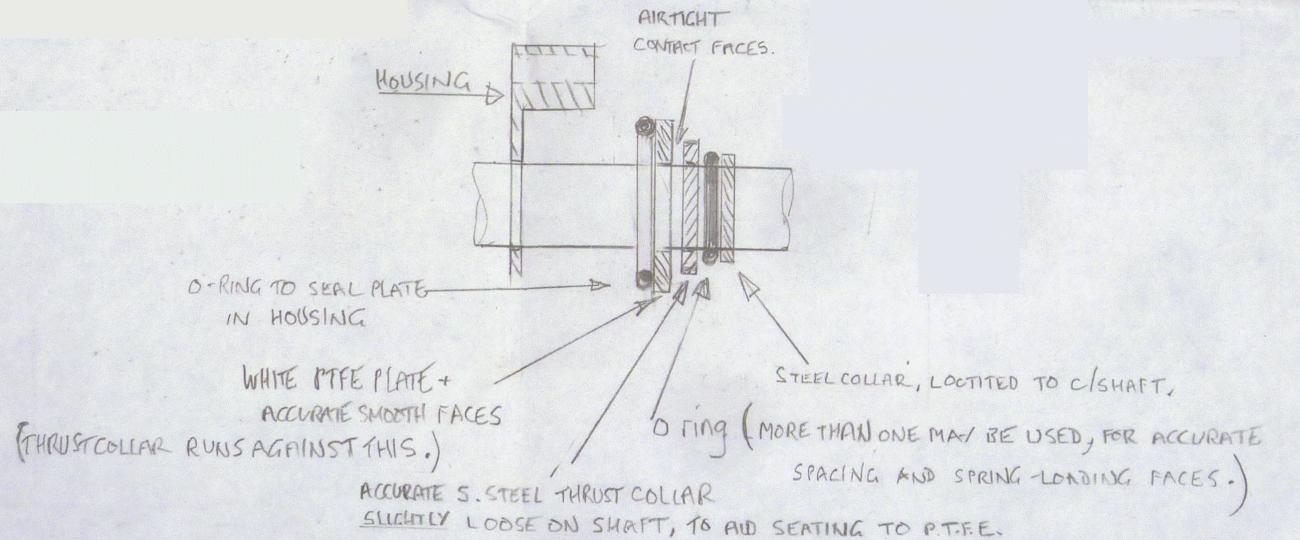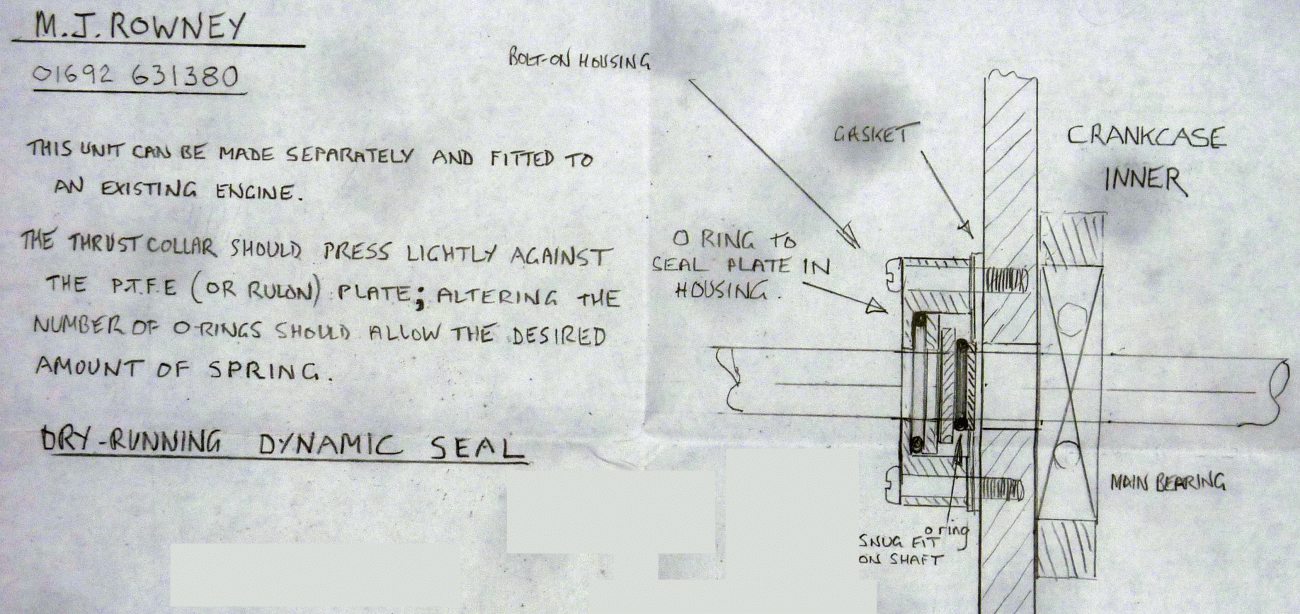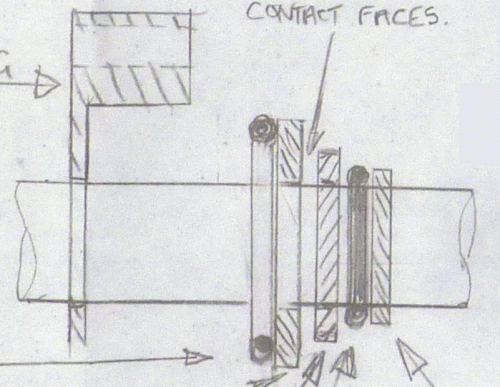Keeping the Pressurised Gas In
Stirling engines can be made more powerful by pressurising the interior of the engine.
The power of the engine is produced by hot molecules of gas pushing at the piston.
If the pressure inside the engine is doubled, then there will be twice as many hot gas molcules pushing at the piston. And the engine power can be doubled. So, by raising the pressure to 15psi (my cars tyres are at 32psi) there is a power increase. The heat flow from the burner has to be able to supply the extra heat, but to double the power, we didn't have to make an engine twice the size!
Then the snag (challenge?) becomes how do we seal the engine so that the pressure doesn't leak out?
Especially where the drive shaft exits from the engine crank case.
Rotating shaft seals are nothing new. They can be bought off the shelf.
The bad news is that they grip the shaft very tightly and cause a lot of friction.
For a Stirling engine and its low power, it is essential to keep the friction as low as possible.
The diagrams below show how Malcolm Rowney is solving the need in his boat "Innovator".
The friction is between a fixed stainless steel surface and a rotating PTFE surface.
.......BACK




